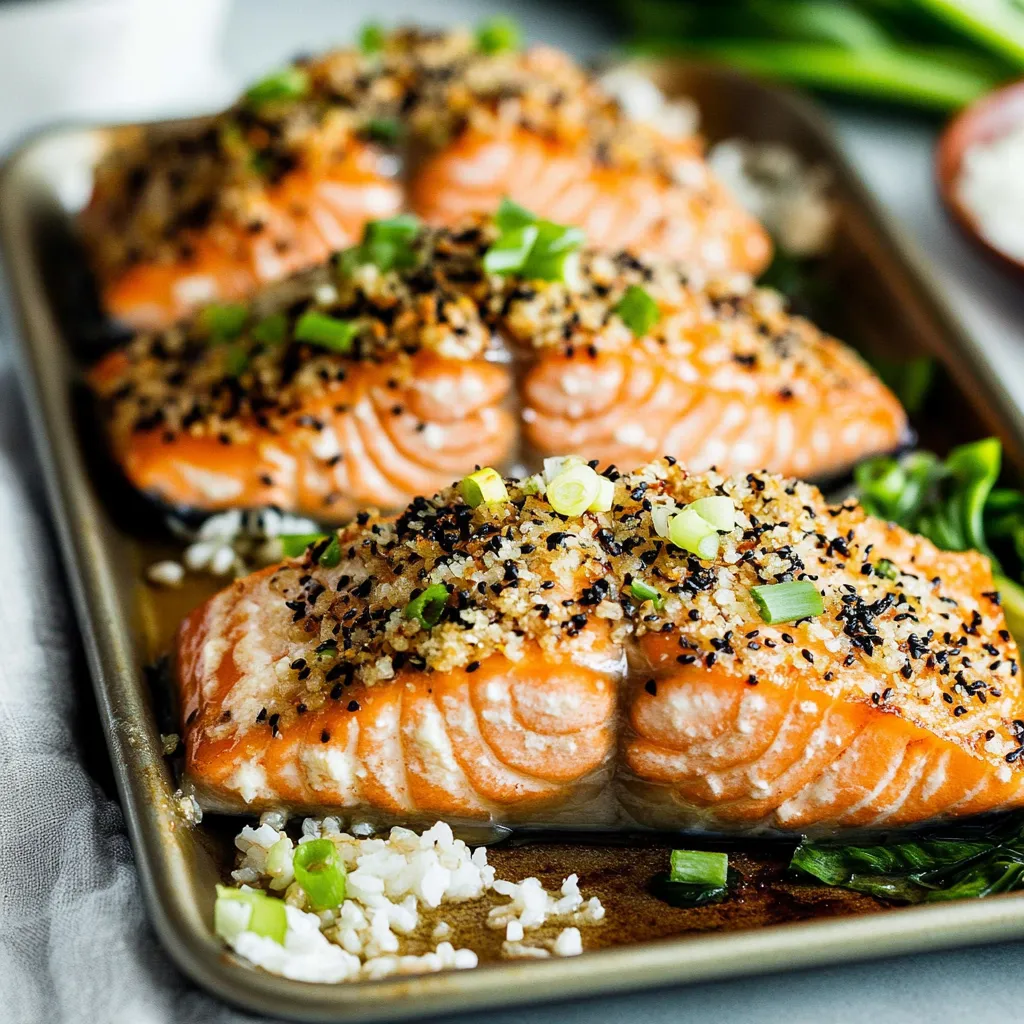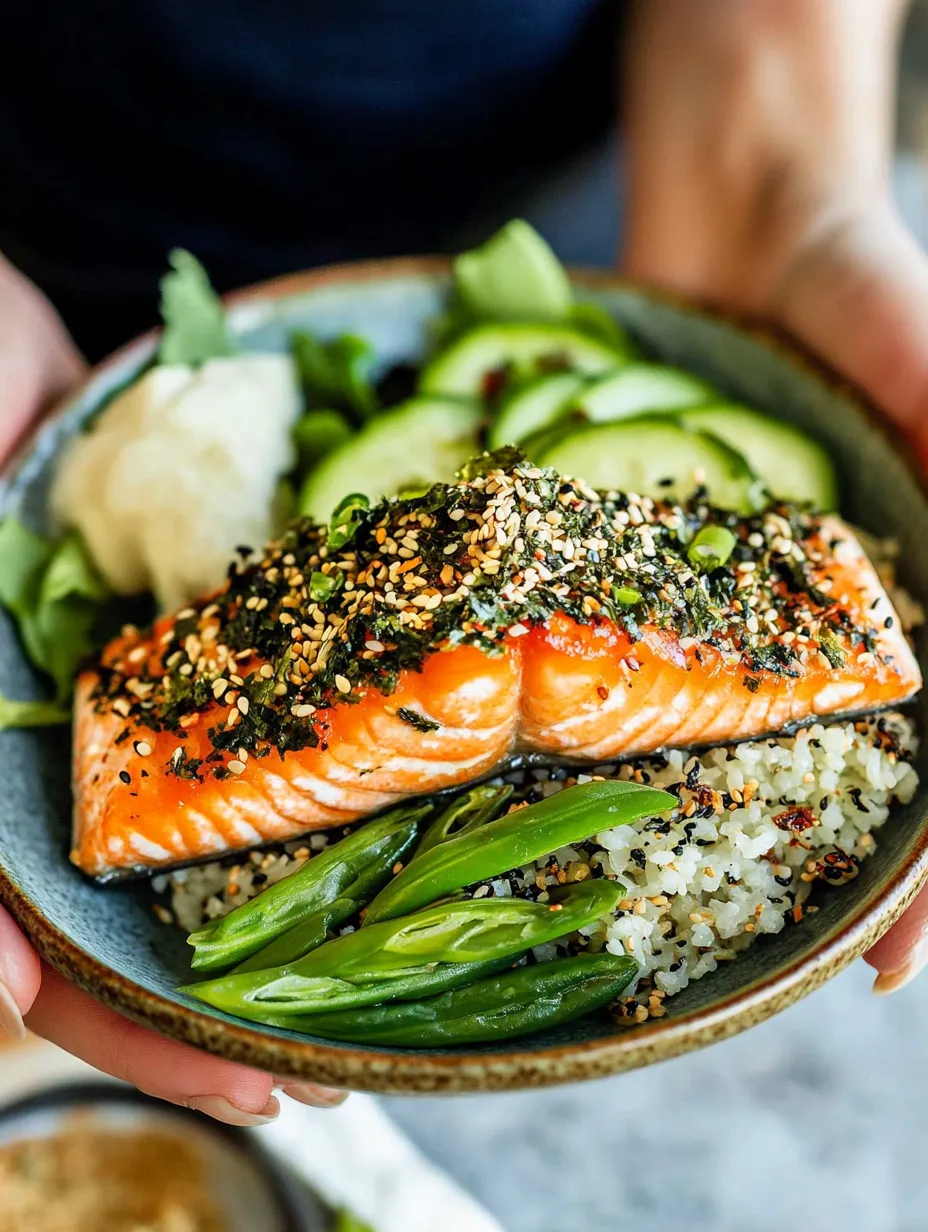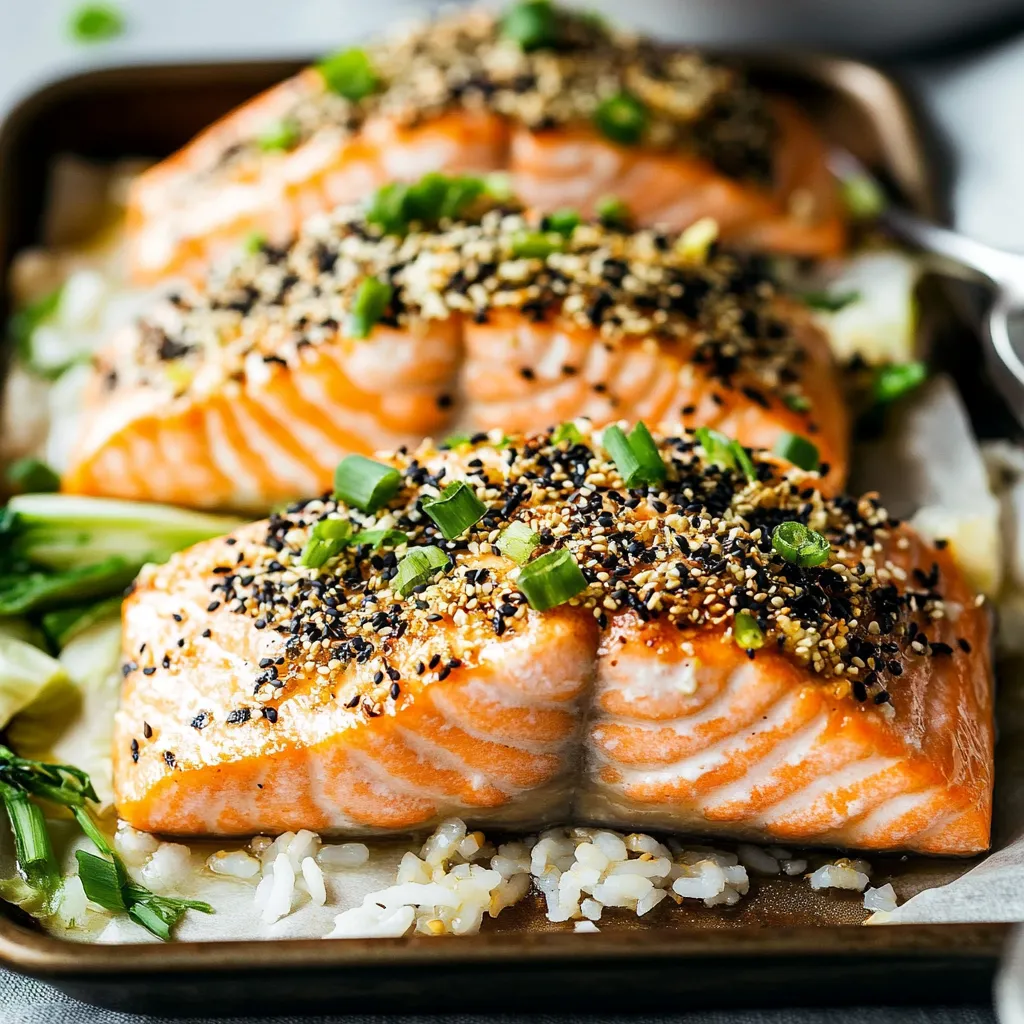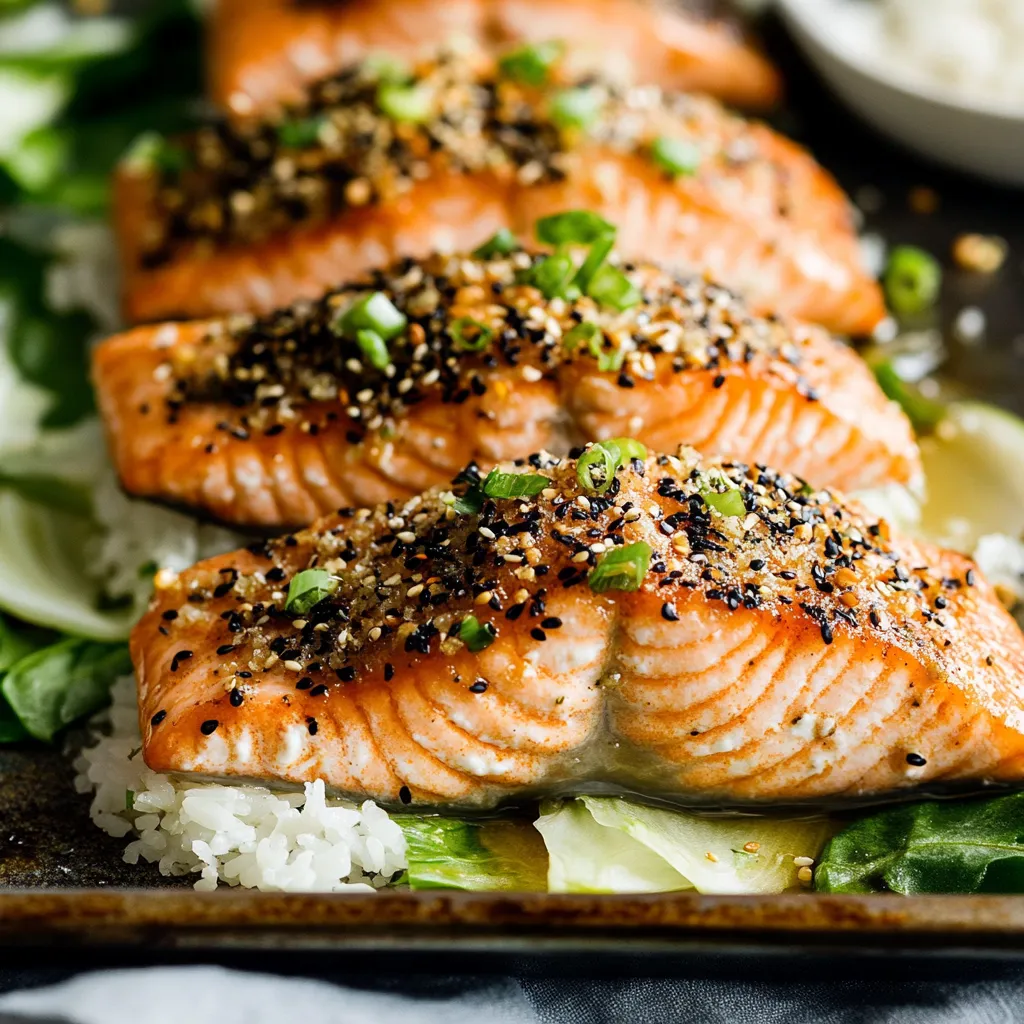 Pin it
Pin it
A perfect fusion of Japanese and Hawaiian flavors comes together in this Furikake Salmon, where creamy, savory, and crunchy elements create an impressive yet effortless weeknight dinner. The magic lies in how simple ingredients transform ordinary salmon into something truly memorable.
Last month, I served this at a casual dinner party, and even my friend who "doesn't eat fish" asked for seconds. The combination of textures and flavors makes this dish instantly appealing.
Essential Ingredients and Selection Tips
- Salmon: Look for center-cut pieces of equal thickness for even cooking
- Kewpie Mayo: Japanese mayo adds richness and tanginess; find it in Asian markets
- Furikake: Choose a blend with visible nori and sesame seeds for best texture
- Shoyu: True Japanese soy sauce provides cleaner flavor than regular soy sauce
- Wasabi: Fresh paste rather than pre-mixed for better heat control
 Pin it
Pin it
Detailed Instructions
- Preparing the Salmon:
- The key to perfect salmon starts with proper temperature. Let the fillets sit at room temperature for 15 minutes before cooking. Pat them thoroughly dry - this ensures the mayo mixture adheres properly.
- Mixing the Mayo Coating:
- When mixing the mayo coating, start with a small amount of wasabi and adjust to taste. The heat should complement, not overwhelm, the other flavors.
- Applying the Mayo Mixture:
- Apply the mayo mixture generously but evenly. Think of it as creating a protective layer that will keep the salmon moist while cooking.
- Adding the Furikake:
- The furikake should be sprinkled from a height to ensure even distribution. Press gently with the back of a spoon to help it adhere to the mayo.
- Cooking the Salmon:
- Watch the salmon carefully during cooking - it's done when it just starts to flake but still looks slightly translucent in the center. It will continue cooking during the rest period.
 Pin it
Pin it
My Japanese neighbor taught me that the best salmon should be "cooked with respect" - not too much heat, not too much handling, just the right amount of attention to let its natural flavors shine.
Mastering the Perfect Texture
Understanding how each element contributes:
- Mayo creates a protective barrier preventing dryness
- Furikake adds essential textural contrast
- Proper rest time allows juices to redistribute
- Rice provides the perfect canvas for any sauce
Temperature Management
Critical points for success:
- Room temperature salmon cooks more evenly
- Hot oven ensures crispy exterior
- Let rest without covering to maintain furikake crunch
- Serve immediately for best temperature contrast
Troubleshooting Common Issues
For dry salmon:
- Check oven temperature accuracy
- Don't overcook - salmon should be medium in center
- Ensure proper mayo coverage
- Watch cooking time carefully
For soggy furikake:
- Apply just before cooking
- Don't overlap mayo and furikake too much
- Use fresh, dry furikake
- Store leftovers properly
Meal Prep Strategies
Make components ahead:
- Mix mayo mixture and store separately
- Prep vegetables in advance
- Cook rice ahead and reheat
- Have garnishes ready to go
Final Thoughts
This Furikake Salmon represents the beautiful simplicity of fusion cuisine. It shows how a few well-chosen ingredients can transform a simple protein into something extraordinary.
The dish bridges cultures and flavors while remaining accessible and practical for everyday cooking. Whether served for a quick family dinner or an elegant gathering, it demonstrates that great cooking doesn't have to be complicated.
Remember, the key to success lies in quality ingredients and attention to timing. Let the natural flavors of the salmon shine while the furikake and mayo enhance rather than overwhelm.
Advanced Flavor Building
Layer flavors strategically:
- Brush salmon with mirin before mayo for extra depth
- Add yuzu zest to the mayo mixture
- Incorporate toasted sesame oil for nuttiness
- Consider a light brush of honey for caramelization
Professional Plating Techniques
Arrange salmon at a slight angle on the rice
Create height with layered vegetables
Use negative space effectively
Add color contrast with microgreens or herbs
Side Dish Innovations
Elevate the complete meal:
- Quick-pickled cucumbers with rice vinegar
- Sesame-dressed spinach (gomae)
- Miso-glazed eggplant
- Wasabi-spiked cucumber salad
 Pin it
Pin it
Emergency Solutions
Quick fixes for common issues:
- Mayo too thick? Thin with a drop of rice vinegar
- Furikake not sticking? Press gently into mayo
- Salmon too pale? Brush with soy sauce before serving
- Rice too sticky? Rinse with hot water and refluff
Seasonal Adaptations
Spring - Add fresh herbs and pea shoots
Summer - Serve with cold soba noodlesFall - Include roasted mushroomsWinter - Pair with warming miso soupThis dish exemplifies how home cooking can rival restaurant quality with minimal effort. The key lies in understanding how each element contributes to the whole and respecting the cooking process.
Whether you're making it for a quick weeknight dinner or an impressive dinner party main course, this Furikake Salmon delivers consistently excellent results while celebrating the beautiful fusion of Japanese and Hawaiian cuisines.
Frequently Asked Questions
- → What is furikake seasoning?
- It's a Japanese seasoning made with nori seaweed, sesame seeds, sugar, and salt, adding umami flavor to dishes.
- → Can I use regular mayonnaise?
- Yes, though Kewpie mayo provides richer flavor due to using only egg yolks and MSG.
- → Where can I find furikake?
- Most grocery stores carry it in the international aisle, or at Asian markets.
- → Can I make this ahead?
- Best served fresh, but leftovers keep for 2 days in the refrigerator.
- → Is the wasabi necessary?
- No, it's optional and the dish is delicious without it.
